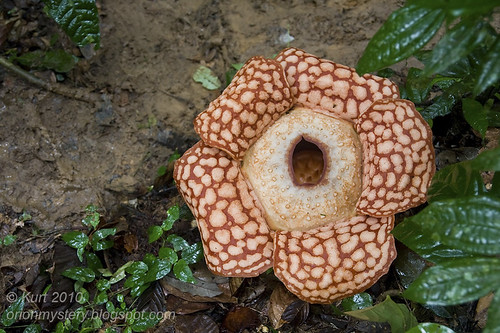Consider these two scenarios:
A: I used my Canon MT24EX Twin Flash
B: the same MT24EX with the same DIY Diffusers on the Sigma 150mm F/2.8.
I should be getting the same light, right?
If you answered Yes, you should read Full Flash Macro Photography - 3 Things you must know! again.
Now take a look at these two images:
Both were shot at 1X, lit with the MT24EX and DIY Diffusers. Even without the text, you should still be able to tell which one was shot with which lens. Clues: look at the quality of the light - which one has nicer light? Which one harsher? Another clue: apparent light size. Look at the twin reflections on the scroll wheel.
MPE65 has a working distance of 4 inches from the front of lens to subject, whereas the Sigma 150, approximately 7.9 inches. The same DIY Diffusers will give better light because of the smaller working distance, and hence better apparent light size. And don't forget about the inverse square law for light and the higher virtual shutter speed. At 1:1, if i were to shoot in manual flash mode, i'd probably need only 1/4th power. With the sigma 150, i might need full power. Since all the light is from the flash at my normal full flash shot of F11, ISO100, 1/200, look what difference in virtual shutter speed i get courtesy of the flash duration:
Flash duration ( which is my virtual shutter speed)
1/1050 sec. at M1/1 (full) output
1/2700 sec. at M1/4 output
Sigma 150's longer working distance of 7.9 inches works against it on all 3 aspects: apparent light size, inverse square law and
Longer lenses are just not meant for Full Flash Photography.
I am not saying the Sigma 150 is not good. I wouldn't have bought it if i didn't think it was great. It's just different. I love it for its bokeh and working distance which allows me to shoot more skittish bugs that's not possible to approach with the MP-E65. But i use it mainly for Fill Flash and Natural Light shots. It's not impossible to use it for full flash and still get great light. You can always place the flash and diffuser off shoe, really close to the subjects. But how many times have you come across an insect in the wild that allows you to do that?
So if the same twin flash and same DIY Diffusers give harsher light on the Sigma 150 because of the longer working distance, how will it perform on the MPE65 at 2:1 (2.5" working distance), and 3:1 (2" working distance). Working distance info here.
I am sure you know the answers already by now. Nicer, more diffused light, of course:)
All shot with Canon MPE65 1X-5X macro lens and/or Sigma 150mm macro lens with MT24EX Twin Flash
However, it is worth mentioning that if you use an adapted concave diffuser on longer lenses like the Sigma 150, you can still get very good diffusion. Look for KJ Teng's and CheeWai's macro rig and sample images in this post,
KJ Teng's macro rig. SB900 on hotshoe, but he has since upgraded to R1 twin flash.
CheeWai's Macro Rig, 270EX on Dual Arm Macro Bracket.
